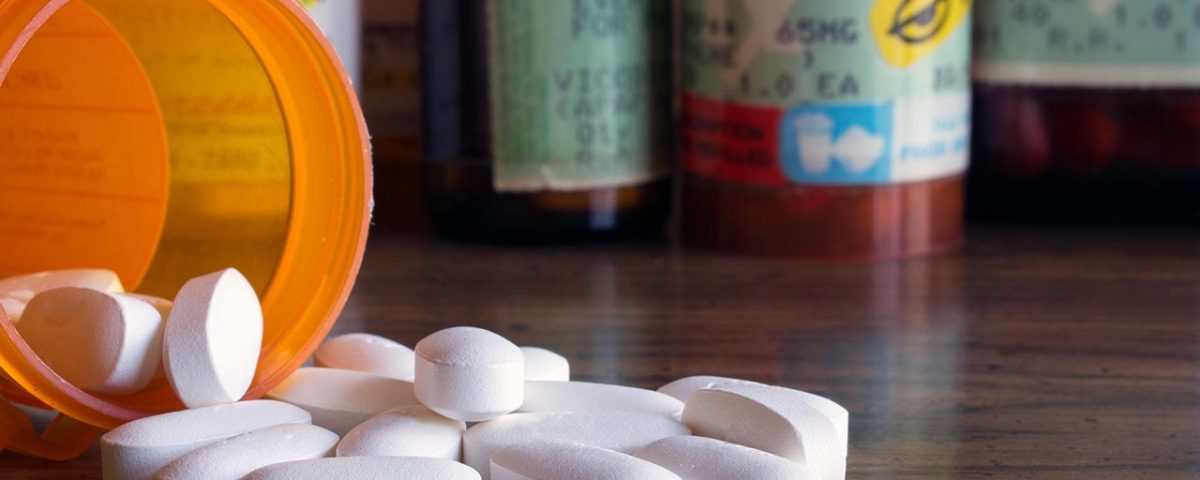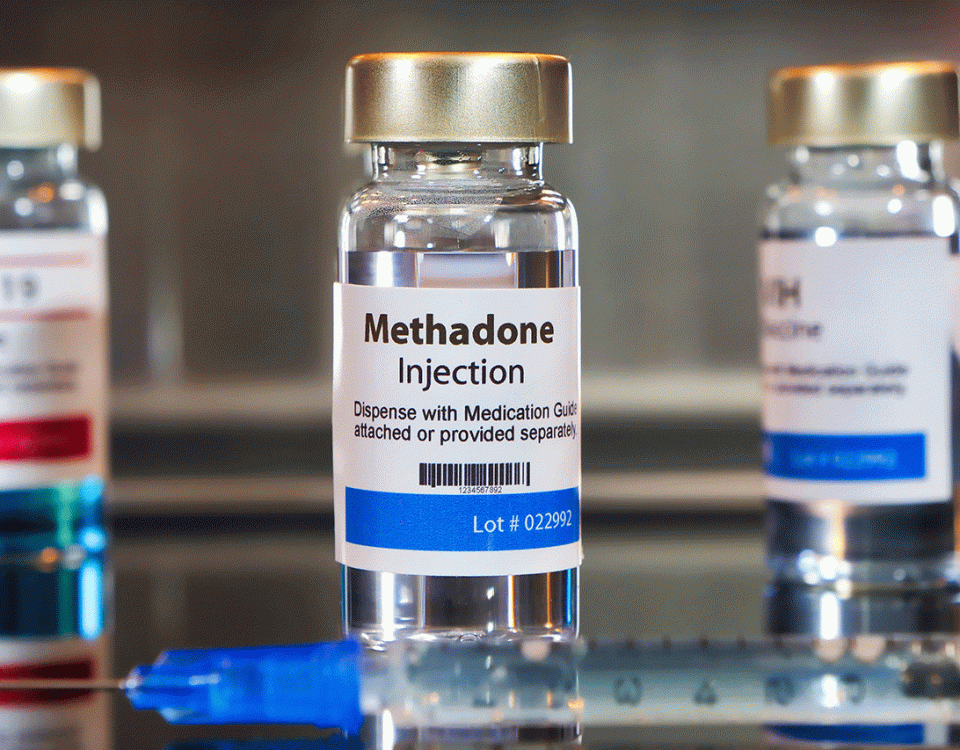The opioid epidemic has been a serious concern in the United States for the past several years.
The rate of opioid overdoses in the country has risen dramatically since the epidemic’s beginning in the late 1990s. One drug that has contributed to the growing addiction and overdose problems is oxycodone. As the drug epidemic persists, more research is being conducted to answer common questions about this drug’s effects on the body, such as “How long does oxycodone stay in your system?” As a Palm Springs rehab center that has experience working with people addicted to oxycodone, we wanted to take a closer look ourselves.
What Is Oxycodone, and What Does It Do?
Oxycodone is a semi-synthetic opioid and one of the many different kinds of opiates derived from a plant known as the opium poppy. Along with heroin and hydrocodone, oxycodone is a highly addictive drug that is often prescribed to treat moderate to severe pain. Many opioids are essential in medical practice because of their efficacy in pain treatment. However, despite their medical uses, opiates like oxycodone are highly addictive, which is why people often need formal opioid withdrawal treatment to recover from their addictions.
Oxycodone is usually sold as a liquid, tablet, or capsule under brand names like Percocet, OxyContin, Roxicodone, and Roxicet. It works by blocking pain signals along the nerves of the brain.
It’s a Schedule II substance with a high potential for abuse, dependence, and addiction. Some people take oxycodone as prescribed by their doctors, while others abuse it to experience the euphoric and sedative high it produces.
What Does Oxycodone Feel Like?
Oxycodone often produces a profound sense of relaxation and bliss when used as directed. A warm, pleasant sensation that spreads throughout the body, a decrease in discomfort, and an overall feeling of well-being are common descriptions given by users. A momentary escape from pain or mental anguish is possible thanks to oxycodone's potent sense of serenity and contentment. The drug does this by attaching to opioid receptors in different areas of the body associated with pain and pleasure, alleviating discomfort and producing a sense of well-being and sedation.
It's important to remember, though, that oxycodone's effects go beyond just pleasant feelings. Some people could feel mentally clouded, which makes it challenging to focus or work on difficult activities. Oxy may also depress respiration, which results in slower breathing rates. This impact, together with the possibility of tolerance and addiction, emphasizes how crucial it is to use oxycodone exactly as a healthcare practitioner prescribes and by a healthcare practitioner and to be aware of any hazards.
How Long Does It Take for Oxycodone to Kick In?
The many oxycodone side effects that a person may experience when abusing this drug may vary in severity and duration depending on factors like dose and metabolism. The effects of oxycodone typically kick in 20 to 30 minutes after being taken. These side effects may peak in the bloodstream within one to two hours after ingestion. How long it takes for oxycodone effects to kick in depends on whether the medication taken is extended or immediate release. Extended- and controlled-release oxycodone can take anywhere from three to four hours to reach peak concentration in the bloodstream.
Some common side effects of oxycodone include:
- Drowsiness
- Headache
- Dizziness
- Tiredness
- Constipation
- Stomach pain
- Nausea and/or vomiting
People abuse oxycodone because it can also produce feelings of sedation and euphoria when taken in higher doses than recommended. An oxycodone high involves a sense of well-being, elation, happiness, and pleasure. Because opioids affect dopamine levels and activate the reward system in the brain, those who abuse these drugs are more likely to continue abusing them after their first high. Additionally, long-term side effects of oxycodone include heart failure, constipation, breathing problems, depression, swelling in the limbs, addiction, and more. Long-term use of oxycodone usually facilitates the need for opioid addiction treatment for both physical and mental recovery.
How Long Does Oxy Stay In Your System?
Getting oxycodone out of your system isn’t the same for everyone. How long oxycodone stays in your system depends on its half-life, among other factors. Immediate-release oxycodone has a half-life of 3.2 hours, while controlled- and extended-release oxycodone has a half-life of 4.5 to 5.6 hours. This means that oxycodone stays in your system for roughly 24 hours before being completely eliminated. It takes several half-lives to eliminate a drug from your body entirely.
Moreover, while oxycodone may stay in your system for up to 24 hours, it can still be detected in your hair, saliva, blood, and urine for much longer.
Oxycodone can be detected in:
- Blood for up to 24 hours after the last dose is taken.
- Urine for 1 to 4 days after the last dose is taken.
- Hair for up to 90 days after the last dose is taken.
- Saliva for up to 2 days after the last dose is taken.
The pain relief of immediate-release oxycodone wears off within 4 to 6 hours after the last dose is taken. Because they last longer, controlled- and extended-release oxycodone wears off 12 hours after the last dose is taken. While oxycodone may still be detected in the system by drug tests, those who purposely abuse the drug will feel the oxycodone high wear off after around 4 to 6 hours.
Factors Affecting How Long Oxycodone Stays in Your System
There are other factors regarding oxycodone detection time that can affect how long it lasts in the body. For example, long-term users or people who have been addicted to opiates for years may take longer to eliminate oxycodone from their bodies than people who have only been using the drug for several weeks. Just like people who use drugs longer will take longer to complete prescription drug detox, people who take larger doses of oxycodone will take longer to metabolize it.
Additional factors that affect how long oxycodone stays in your body include:
- The person’s metabolism rate
- Body mass and
- Body fat content
- The amount of water in the body
- The health of the liver and kidneys
- The person’s age
- The frequency and severity of the person’s opiate use
- The quality of the drug (some drugs contain cutting agents, making them less pure and potent)
These factors should be considered when analyzing the results of drug tests or creating detoxification plans since they affect how quickly different people eliminate oxycodone. For specific advice and information about oxycodone detection and metabolism, it is best to speak with a healthcare practitioner.
Can You Overdose on Oxycodone?
Yes, it is possible to overdose on oxycodone. When someone takes more of the drug than their body can safely handle, they may experience an overdose. This can have serious repercussions and, in rare instances, prove fatal. Knowing the warning signs of oxycodone overdose is essential for prompt medical intervention.
Oxycodone overdose symptoms might vary depending on the dosage and personal circumstances. Extreme sleepiness, slow or shallow breathing, pinpoint pupils, confusion, dizziness, weak muscles, cold and clammy skin, a weak pulse, and loss of consciousness are typical overdose symptoms. An oxycodone overdose can occasionally result in respiratory depression, a coma, or even death.
It is imperative to contact emergency services or get medical assistance right away if you think someone may have overdosed on oxycodone. Medical personnel have particular methods and drugs, including naloxone, to combat the symptoms of an oxycodone overdose. Prompt medical intervention can save lives. In order to reduce the danger of an overdose, it is essential to put safety first, take medications as directed, and consult a doctor as needed.
Opiates are addictive drugs, and long-term abuse can have serious consequences. The opioid epidemic has resulted in millions of overdose-related deaths. You don’t have to be an addict to overdose on opioids.
Whether you’re struggling with a new substance problem or have struggled with addiction for years, Banyan Palm Springs can help. Call us now at 888-280-4763 for more information about our drug addiction help in California.
Related Reading









